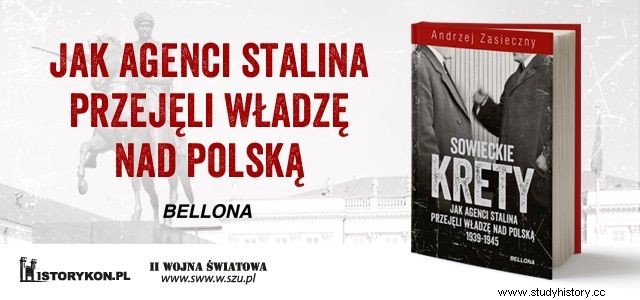When the war broke out, "all matters and issues were to be relegated to the background." Even for the communists it seemed that the Nazis were the deadly enemy. However, there was no question of close cooperation between the democratic forces and the supporters of the Soviets. What's worse - some were able to cooperate with the Gestapo itself to fight a competitor.
At the beginning of the war, it was difficult to speak of any rivalry or two voices in the underground structures of occupied Poland. If there were disputes and divisions, it was only on the level of the broadly understood patriotic camp. They most often concerned the attitude towards the discredited Sanacja governments.
Communists were few in number, marginalized and isolated. This was evidenced by a completely unsuccessful attempt by the communists to organize in Poland, after the German attack on the Soviet Union, the so-called "Silent front". In the book "Soviet Moles . How Stalin's Agents Seized Power Over Poland 1939-1945 ”Andrzej Zasieczny writes:
(...) in August 1942 at the latest, the idea (...) of a "silent front" (...) triggering an anti-German uprising) in occupied Poland. It turned out that Poles were not suicides and they did not fall for the slogans of communist propaganda.
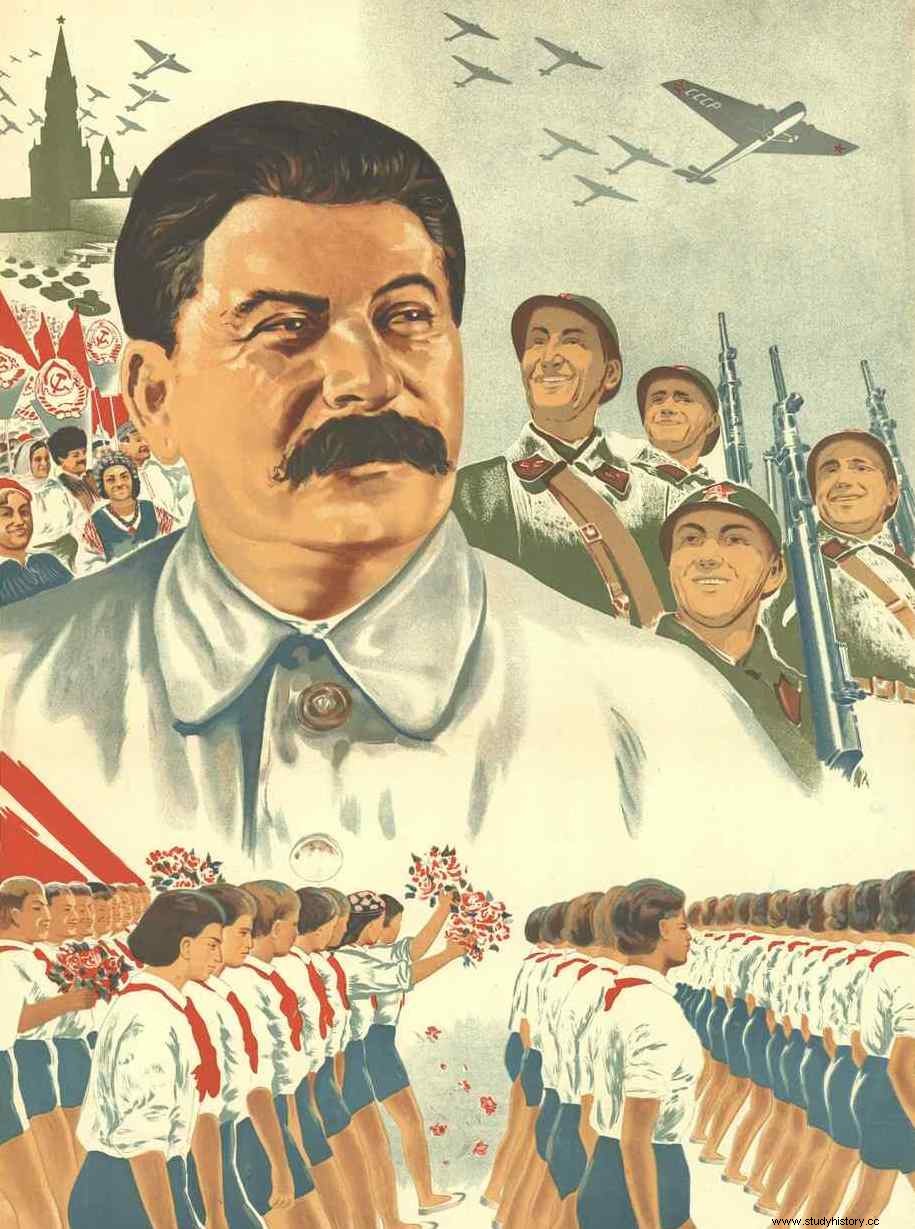
Stalin quickly realized that he could not count on Polish communists. So he decided to act with the help of Soviet comrades ... a fragment of an Azerbaijani poster from 1938 (source:public domain).
Stalin understood that there was no point in counting on the grassroots activities of the Polish communists - they had no hearing in society.
Stalin creates the grid
So it seemed that the patriotic forces, with the enormous support of the masses, had the patent for the conspiracy. Structures of the Underground State, both civil and military, were born. Naturally, there was also a strong intelligence network, co-created by experienced members of the former military intelligence.
Joseph Stalin, with far-reaching plans to seize Central and Eastern Europe, knew that an anti-Nazi communist guerrilla must also arise. On his initiative, the Polish Workers' Party was established, formed and activated by Polish communists sent from Moscow and parachuted, absolutely loyal to the "big brother".
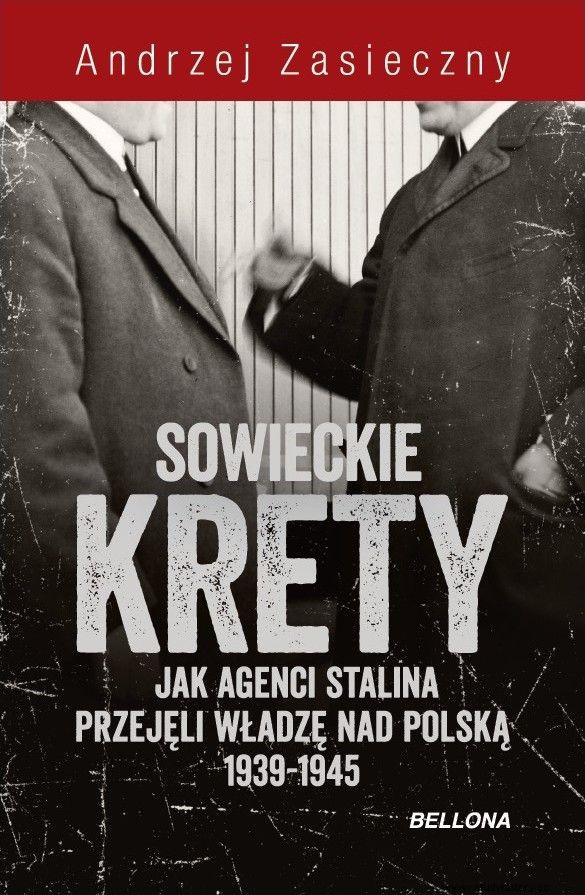
Communists for the interview!
Stalin knew that there was no point in counting on the open and publicly supported activity of Polish communists. However, he had an idea to develop the workers' movement in occupied Poland. With the enormous support of the NKVD, an active and offensive intelligence network was created within the PPR. Władysław Gomułka mentioned it in his "Diaries":
The almost complete isolation of the Polish Workers' Party in the Polish political underground gave rise in Moscow to the idea of using the communist cadre in its ranks (...) to do intelligence work for the Soviet Union, to create this cadre - partly already recruited by the Soviet intelligence - network of intelligence cells in the party (...).
Many Polish rank-and-file communists, often acting in good faith and in total ignorance, worked to the glory of the Soviet intelligence service.
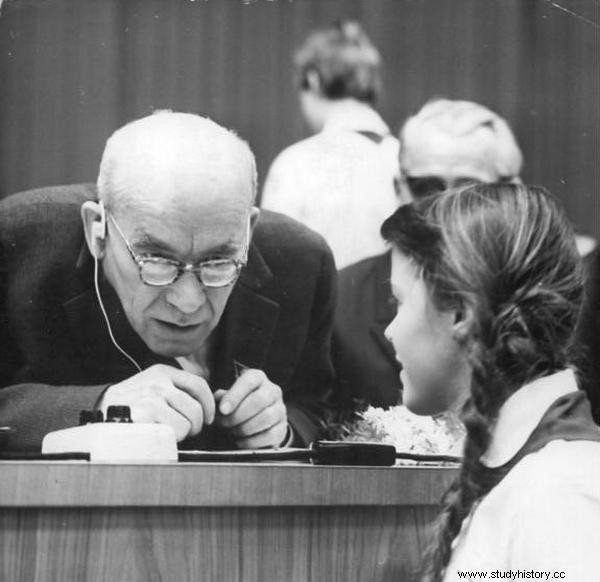
Władysław Gomułka himself admitted in his "Diaries" that members of the PPR were used for intelligence work. The photo shows the First Secretary at the GDR party's SED congress in 1963 (photo Bundesarchiv, Bild 183-B0121-0010-022 / Junge, Peter Heinz, license CC-BY-SA 3.0).
Kocjan - As AK
Therefore, in occupied Poland, there were two resilient intelligence networks, theoretically focused on fighting the Nazi invaders. The Home Army intelligence operated within the Underground State. The aim of his activity was to obtain information about the movements, resources and plans of the German army. It assumed close cooperation with the allies - during the war almost 25,000 reports were delivered to the allies.
One of the famous aces of the Home Army intelligence service was Antoni Kocjan. He regularly obtained information about the secret facility in Peenemünde on the island of Usedom. The Germans camped there outstanding scientists who worked on the development of the V-1 and V-2 rockets. Thanks to the information provided by Kocjan's people, there was a spectacular Allied air raid on the center, which puts the work on the weapon suspended for a long time.
After the war, Dwight Eisenhower stated:
If the Germans had succeeded in perfecting the new V-1 V-2 six months earlier, our invasion of Europe would have been extremely difficult, even in some circumstances it would have been impossible.
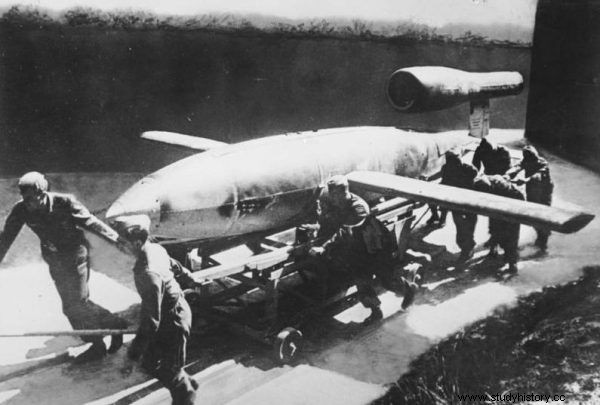
Kocjan obtained information about a secret center in Peenemünde. Perhaps he saw the soldiers preparing the V-1 rocket for take-off (photo Bundesarchiv, Bild 146-1973-029A-24A / Lysiak, license CC-BY-SA 3.0).
Kocjan himself was arrested in June 1944 and shot two months later.
Red interview
Competitive anti-Nazi intelligence was formed by communists:those associated with the PPR and those directly reporting to the NKVD. Theoretically, its task was to obtain information related to the activities of Nazi military structures. Similarly to the Home Army, it had its protector - in this case it was the Soviet Union.
The word "theoretically" was used in the previous paragraph on purpose. Many historians marginalize the role of the AL intelligence in the investigation of the Germans. The NKVD itself was a perfectly organized structure, so the Soviets were in no way dependent on the help of Polish communists. Poles associated with the PPR were assigned a completely different mission.
Hrynkiewicz - As AL
The true purpose of the communist intelligence service is evidenced by the activity of Bogusław Hrynkiewicz, perhaps the most famous ace of this formation. According to the author of "Soviet Moles":
He had an extraordinary talent for espionage, he was extremely clever and intelligent. He also had to have an excellent memory so as not to be mistaken when he lied (or told legends) to different people about his past. It must be remembered that each organization with which he undertook intelligence cooperation, he had to present a different version of his story about himself.
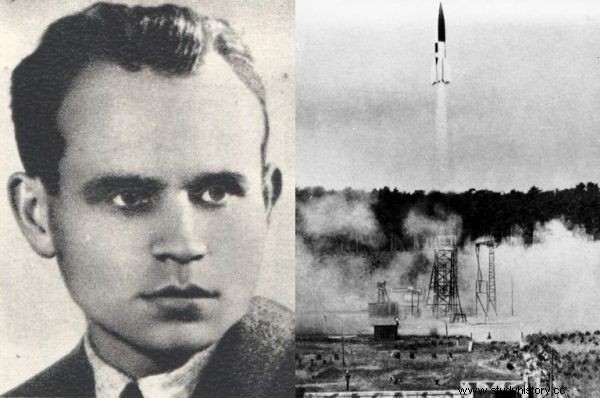
It was Antoni Kocjan (in the photo on the left from the public domain) who helped unravel the mysteries of the German V-2 missiles at the research facility in Peenemünde (on the right, photo Bundesarchiv, Bild 141-1880, license CC-BY-SA 3.0).
Already at the beginning of a serious espionage career, he managed to slip into the structures of the Catholic-national underground organization "Sword and Plow". Gradually, he gained the respect and trust of the conspirators with information, documents and traces of the activists of the communist underground. False data and leads or, of course, from the communist perspective, of little value.
When two leading activists of the organization - Anatol Słowikowski and Zbigniew Grad, were arrested and shot on charges of collaboration with the Germans - "Miecz i Pług" was finally discredited. In which Hrynkiewicz himself played a significant part.
Archive take over
However, the most spectacular action took place in February 1944. Hrynkiewicz, quite accidentally, fell into the favors of a certain "Raven", that is Wacław Kupecki, who looked after the security archive of the Government Delegation for Poland.

Hrynkiewicz provided the communists with the documents obtained there on an ongoing basis. However, their number increased, and the spy was unable to keep up with the copying. So he initiated the takeover of the entire archive. Having extensive contacts in the Gestapo, he offered the Germans participation in the action.
The action was flawless. On February 17, a high-ranking Gestapo officer appeared in Kupecki's apartment, assisted by people from the People's Army. The documents seized from the archives were divided:those concerning the Nazis were confiscated by the Gestapo, while those concerning the communists were placed in the hands of the AL. Kupecki, his wife and the other five people who fell into the cauldron that unfortunate day were murdered.
The war of interviews
In many cases, there is real hostility between interviews. It is not surprising - since the assumption of the AL protectors was to destroy patriotic organizations, they were responsible for the beautiful ones.
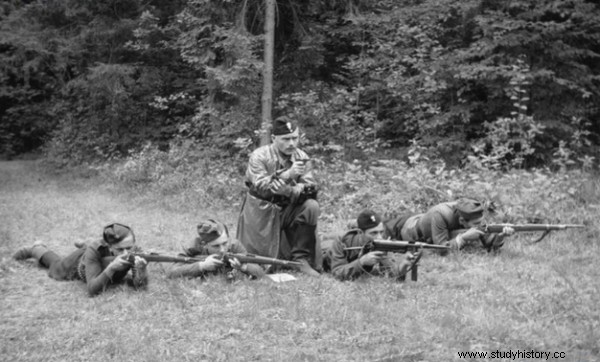
The members of the Home Army had to fight not only against the occupier, but also against the communists. The photo shows the members of the 1st Sambor Company during the Operation "Storm" (photo:Mieczysław Michalski, source:public domain).
The so-called Lombard was one of the three independent sections of the Home Army intelligence. It operated in the west of the country and was the most offensive of all units - it was also famous for its activity in the Third Reich and achieved spectacular successes.
No wonder that the communists saw a considerable threat in the Pawn Shop, feeling that after the war it could cause them a lot of problems. So they decided to plant a mole there, which will help determine the composition of the net. The members of "Lombard", however, had excellent personal knowledge - they quickly recognized the communist informant who revealed the location of the weapons depot.
In this case there was no mercy - the informant, as we know from the UB records, was liquidated and members of the "Lombard", operating in full conspiracy, avoided decoding by the security service for a long time after the war.
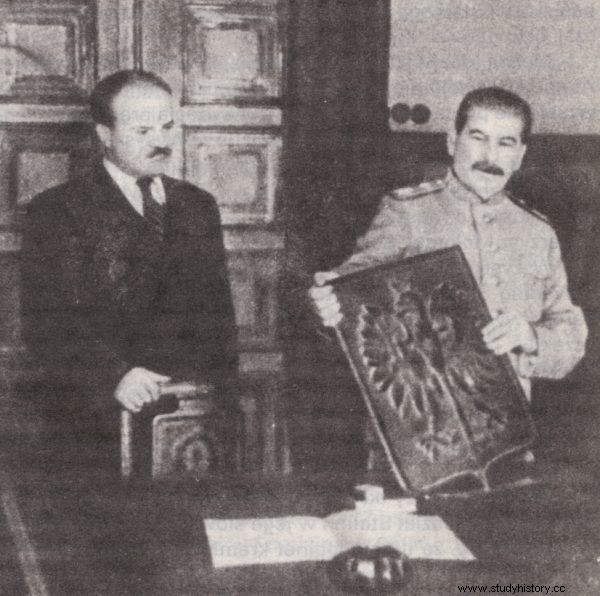
The People's Army won the war of interviews, but only thanks to Stalin's support. In this photo, the leader of the USSR, assisted by Molotov, presents the new coat of arms of Poland. People's Republic of Poland (source:public domain).
Who won?
The effectiveness of both interviews is extremely difficult to verify. If we take into account the end result - the communists are undoubtedly the winners in this case. However, it should be taken into account that it was not the effectiveness and efficiency of the intelligence that mattered the most. What mattered was the strength, influence and commitment of the protector. So Yalta really decided about the result of this game.
You can buy the book "Soviet Moles" on the publisher's website:
